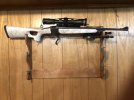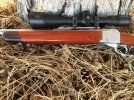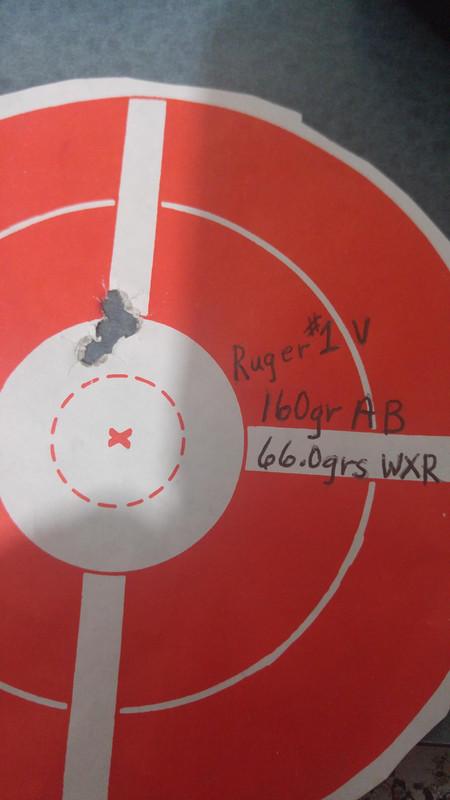I have a bit of experience with the Ruger no 1. Back in the mid 80's, I had a 300 win mag and a 6mm remington. Neither shot very good. 2" groups were the norm. I sold both, but wished I had them both back now, after getting some education on them. I now have a Lipseys ruger no 1 in 25-06, and it will shoot moa to sub-moa, depending on load work-up and the nut behind the trigger. The first thing I can tell you is that placement of front support bag or rest is crucial in shot to shot consistency. Front rest must be as close to the receiver as possible, and must be in the same spot every shot or you're gonna get poi shift. I sanded out the forend pretty good, and then bedded the entire forend with pro-bed 2000. Now, when I put the forend back on to formfit to the barrel channel for drying and curing, I didn't tighten the forend screw down very tight. Just enough to force the excess bedding out of the top. After 12-24 hours, I pulled the forend off and did some cleanup of excess bedding and put it back on, and once again, didn't tighten the screw down past a snug fit, and let it cure for a couple more days. After that, I started doing load work-up. I took the load that I felt had the most potential for accuracy, and loaded up 20 rounds or so, whatever you want, and I'd shoot a 3 shot group, and then tighten up the forend screw, maybe a quarter or half turn, and shoot another 3 shot group. I'd repeat this process until I found the pressure that the rifle preferred, and you will find that optimal pressure point. That's all I did. No aftermarket trigger, although that would probably enhance the accuracy even more, no work to the butt stock or barrel crown. With 120 grain remington coreloks and Magpro powder, it'll do 1" or better as consistently as what I, the shooter is. Once again, can't emphasize the position of front support rest enough. Good luck. Keep at it. The accuracy is there, ya just gotta find what she needs.



